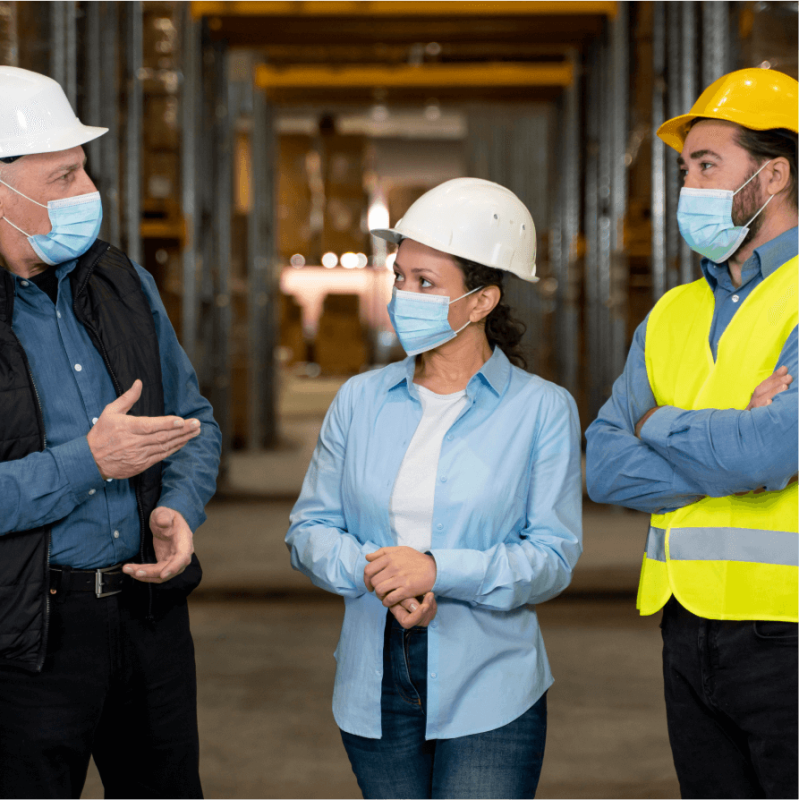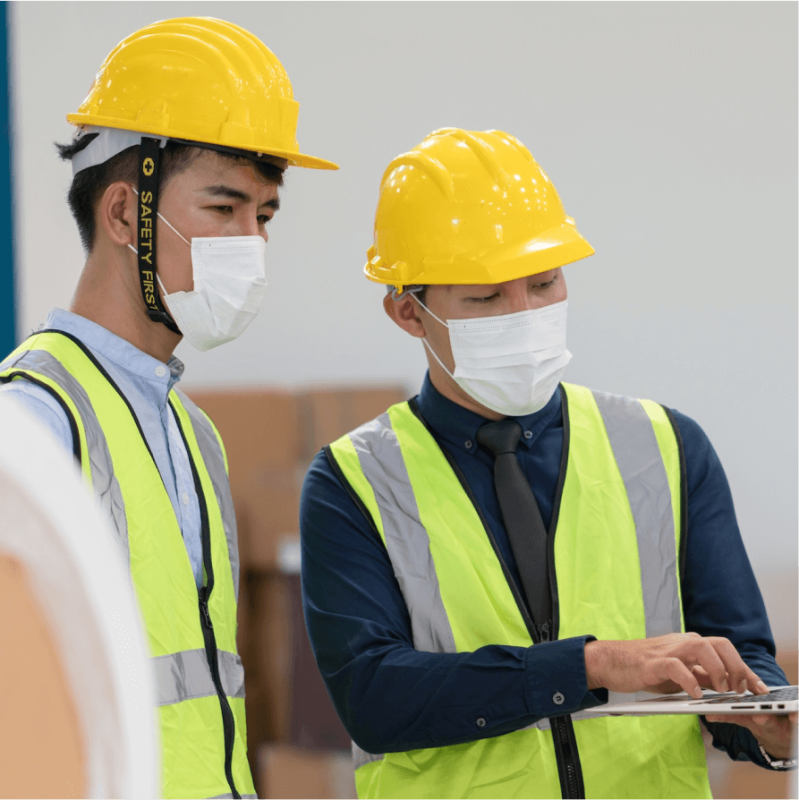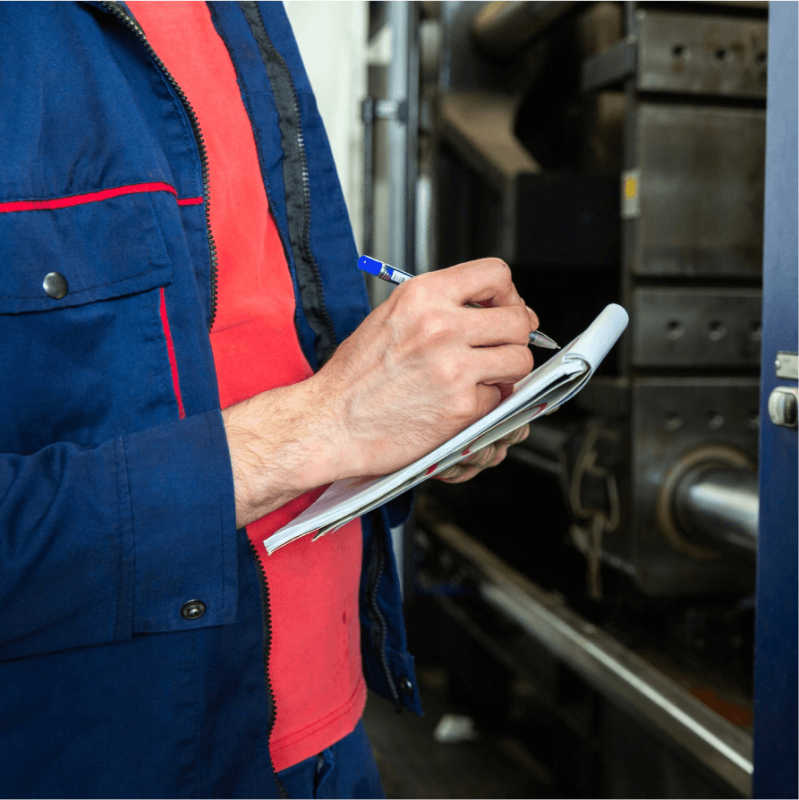Job Safety Analysis (JSA) and Safe Work Method Statement (SWMS)
Everything you need to know about JSA and SWMS.
Everything you need to know about JSA and SWMS.
Simply put, a JSA is a risk assessment for a particular job when a Safe Operating Procedure (SOP) or Work Instruction (WI) does not exist for that job. It is designed to ensure workers know how to perform the work safely and are aware of the hazards present and how to control them before they start the job.
Most routine jobs, such as daily machine operating, should have an SOP or WI. People should be trained in the SOP or WI before they are allowed to perform the work unsupervised.
Therefore, a JSA is usually used for non-routine or unfamiliar work that has not been risk-assessed. For instance, a JSA is required when workers are faced with an unfamiliar situation, requiring them to think about the hazards and how to perform the work safely before they commence.
A JSA essentially forces workers and their supervisors to think about the risks involved with non-routine or unfamiliar work. It requires workers to break down the job by task, identify the hazard with each task, and the controls they will use to reduce the risk associated with the hazard.

A SWMS is almost interchangeable with a JSA. However, their use is mandated for all
high-risk construction work (HRCW) and must be completed before the work commences.
The following construction work is considered high-risk and requires a SWMS:
SWMS must be retained for the duration of the work.
Each year over 130,000 workers are seriously injured. Most of these injuries or accidents could have been avoided if organisations had taken the time to see where their safety gaps were.
Simply put, each job needs its own SWMS. Therefore, if a tradesperson is performing multiple HRCW jobs in one day, then they need a SWMS for each job.
It has been said this is onerous for tradespeople – for example, if a tradesperson needs to perform work on three separate house roofs in one day, they need to complete the SWMS for each location before they start the work.
One way of managing this is to develop a SWMS for each particular type of HRCW job such as working at heights (house roofs) and then simply adjusting the SWMS for the particular job according to any new hazards and controls that the existing SWMS has not captured.
If the SWMS adequately captures all the hazards and controls, (i.e. how to secure a ladder, use of harnesses, etc.) and there are no new hazards or controls required, then the Tradesperson can possibly just sign and date the existing Safe Work Method Statement. However, they need to be mindful that this does not simply become a “tick and flick” exercise for expediency.


Your Safety Partners has extensive experience in conducting risk assessments and can help:
Each year over 130,000 workers are seriously injured. Most of these injuries or accidents could have been avoided if organisations had taken the time to see where their safety gaps were.
We start with a safety audit to identify hazards and ensure Job Safety Analyses (JSAs) are properly applied to non-routine tasks.
We help businesses obtain compliance certificates by making sure Safe Work Method Statements (SWMS) are completed for all high-risk construction work.
Our team evaluates risk scores for tasks, helping to lower them by implementing the appropriate controls outlined in JSAs and SWMS.
A JSA is required when no Safe Operating Procedure (SOP) or Work Instruction (WI) exists for a job, particularly for non-routine or unfamiliar tasks.
For example, suppose workers are faced with a new or unusual task that hasn’t been risk-assessed. In that case, a JSA breaks down the job, identifies risks, and outlines controls to mitigate those risks, ensuring that workers understand how to perform the task safely.
While both JSA and SWMS are used to manage workplace safety, a JSA is generally used for non-routine tasks without existing SOPs, focusing on breaking down jobs into tasks and identifying hazards.
A SWMS, however, is mandatory for high-risk construction work (HRCW) and must be completed before such work starts. SWMS outlines how to safely perform specific high-risk activities like working at heights or near hazardous materials, ensuring compliance with Australian regulations.
Yes, a new SWMS is required for each high-risk construction job to address the specific risks associated with each job location and task. If similar tasks are performed across multiple jobs, the SWMS can be adapted as long as it accurately covers all relevant hazards and controls.
For instance, tradespeople working on multiple roofs in a day need a SWMS for each roof but can adapt an existing SWMS if it fully captures all potential hazards.
Your Safety Partners can develop tailored policies and procedures that outline the correct JSA and SWMS processes, provide templates for various high-risk activities, and offer training to ensure these documents are used correctly.
We also offer software solutions that streamline the management of JSAs and SWMS, making it easier for your team to stay compliant and safe.
Ensuring safety in the workplace is crucial to reducing liabilities and protecting employees, especially in high-risk industries. Robust safety practices, including JSAs and SWMS, play a vital role in preventing accidents and injuries.
In 2022, machinery operators and drivers accounted for the highest proportion of worker fatalities in Australia, with a fatality rate of 8.4 per 100,000 workers.
The majority of worker fatalities in 2022 occurred in the transport, agriculture, and construction industries. JSAs and SWMS prevent this number from being higher.
In 2021-22 manual tasks involving lifting, pushing, pulling, or bending, account for 24% of injuries. Implementing safety measures through JSAs can reduce these types of incidents.
Book your free one hour on site safety consultation
A workplace safety consultant can also ensure the owners and managers of businesses meet their safety compliance requirements. This helps protect them from compensation or legal costs.
Tyrepower has had an ongoing relationship with YSP and John Tregambe for last four years. John and the team at YSP assisted Tyrepower on a number of projects over this time, including the total updating and re-launch of the Tyrepower safety management system of our stores and offices. When you need any service, we go straight to YSP.
Former Education and Development Manager (Tyrepower Australia and New Zealand)
Your Safety Partners are like having a team of in-house safety experts. They are extremely responsive, can support or run a complete GAP analysis, design tailored relevant solutions to suit your business quickly and then help you implement them, including training any third parties. All boxes ticked!
Risk and Compliance Manager Hazeldenes